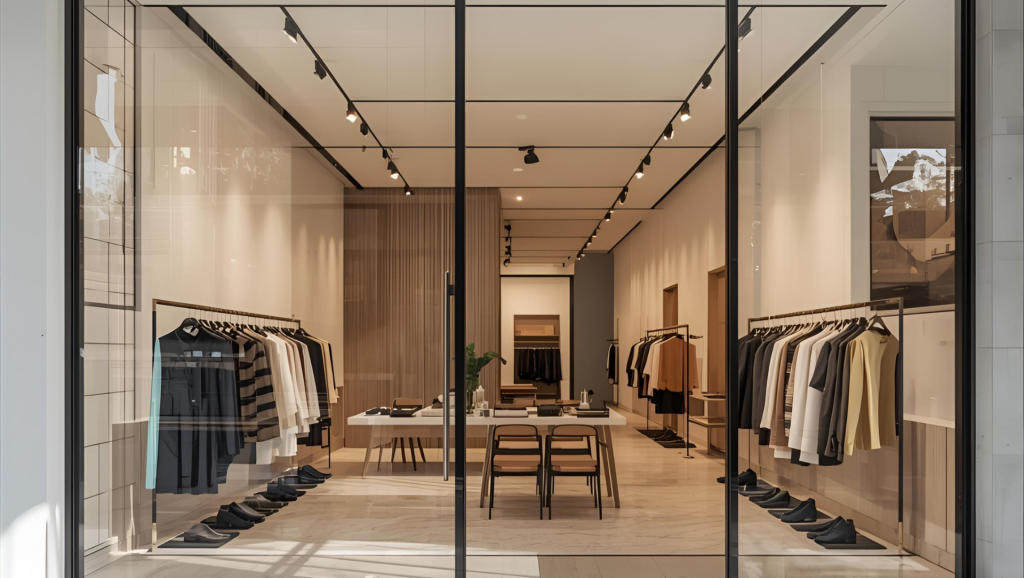In the vibrant, hyper-competitive retail landscape of Singapore, the role of the physical store has been fundamentally redefined. With the convenience of e-commerce just a click away, a brick-and-mortar establishment can no longer afford to be a mere point of transaction. It must be a destination. It must be an experience.
This is where strategic retail interior design in Singapore becomes one of the most crucial investments a brand can make. It is the art and science of transforming a physical space into a powerful, three-dimensional embodiment of your brand. A well-designed store doesn’t just house products; it builds relationships, fosters loyalty, and creates a compelling reason for customers to choose the in-person experience over the digital one.
Here’s how a strategic approach to retail design can elevate your customer engagement and create an unforgettable brand experience.
1. The Store as a Living Brand Story
Your store is the most immersive brand advertisement you will ever create. It’s where your brand’s identity—its values, its aesthetic, its promise to the customer—comes to life. A successful retail design translates your brand story into a multi-sensory experience.
- Material Language: The materials you choose speak volumes. The raw concrete, exposed metal, and minimalist lines of an edgy streetwear brand tell a different story than the polished marble, soft velvets, and warm brass accents of a luxury couturier. The design should feel like a natural extension of the products themselves.
- Colour Psychology: Colour palettes evoke emotion and guide behaviour. A vibrant, energetic palette might encourage fast, exciting purchases in a fast-fashion store, while a serene, neutral palette in a wellness boutique encourages calm, considered browsing.
2. Crafting the Customer Journey: The Science of Flow
The layout of your store is not arbitrary; it is a carefully choreographed path designed to guide, entice, and maximize engagement. A deep understanding of customer psychology is essential.
- The Decompression Zone: The first few feet inside your entrance are critical. This “decompression zone” allows shoppers to transition from the busy mall or street. It should be open and uncluttered, offering a clear view of what lies ahead.
- Strategic Pathways: The store layout (whether a grid, loop, or free-flow design) dictates how customers discover your products. A well-planned path ensures a logical flow, prevents bottlenecks, and uses “hero” displays or focal points to draw shoppers deeper into the space.
- Sightlines and Visibility: Customers should be able to easily orient themselves and see key product categories. Clear sightlines create a sense of openness and comfort, making the shopping experience more enjoyable.
3. Designing for Interaction: From Passive Browsing to Active Engagement
The modern consumer craves interaction. The design of your store should invite them to touch, try, and connect with your brand on a deeper level.
- Experiential Zones: Dedicate space for more than just shelves. This could be a “customization station” for a fashion brand, a product testing bar for a beauty store, or a comfortable lounge area for a high-end watch boutique. These zones turn passive browsing into an active, memorable experience.
- The “Instagrammable Moment”: In the age of social media, your store is also a content studio. A unique feature wall, a stunning art installation, or a beautifully designed fitting room can become a powerful marketing tool, encouraging user-generated content that extends your brand’s reach organically.
- Tactile Engagement: Use a variety of textures and materials that invite touch. The feel of a product and its environment is a key part of the buying decision, something that online shopping can never replicate.
4. The Power of Ambiance: Lighting, Sound, and Scent
The most powerful design elements are often the ones customers feel rather than see. Ambiance is a critical component of the overall brand experience.
- Layered Lighting: A professional lighting plan is essential. Ambient lighting sets the overall mood, task lighting ensures products are clearly visible, and accent lighting creates drama by highlighting key displays. Great lighting makes products look their best and guides the customer’s eye.
- Sensory Branding: The “scent signature” of a brand or a carefully curated music playlist can create a powerful emotional connection and improve brand recall long after a customer has left the store.
The Turnkey Advantage for Retail Success
Executing a world-class retail fit-out in Singapore involves navigating tight deadlines from mall management, coordinating numerous suppliers, and adhering to strict regulations. A turnkey design and build partner is essential for a seamless process. By integrating design, project management, and construction, a firm like DDA ensures your brand’s vision is executed flawlessly, on time, and on budget, allowing you to focus on what you do best—running your business.
Your physical store is your brand’s ultimate stage. By investing in strategic design, you create an engaging, immersive world that builds community, fosters loyalty, and drives sustainable growth.

